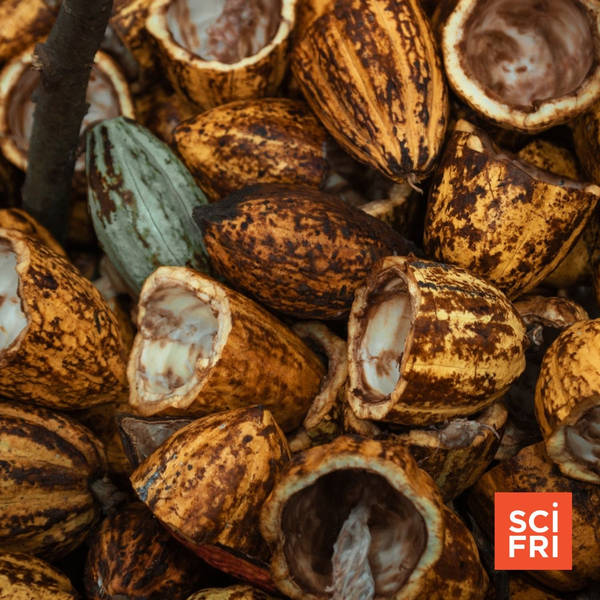
Flame Retardant From Cocoa Pod Husks | The Oozy Physics Of Oobleck
On cocoa farms around the world, cocoa beans are pulled from their pods, and the hard husks are discarded, leaving 20 million tons of plant waste to biodegrade and potentially harm future crops. These husks are a source of lignin, a substance that gives plants their rigidity. It’s extremely abundant—but often wasted.
A new study published in the journal ACS Sustainable Chemistry and Engineering found that the lignin processed from leftover cocoa pod husks could have a new use as an ingredient in flame retardant.
“Lignin is pretty special, as it is very soluble in organic solvents,” said study co-author Dr. Nicholas Westwood, a professor of chemistry and chemical biology at St. Andrews University in Scotland, in an email. This means lignin can be chemically manipulated to create a number of useful substances relatively easily.
Because of lignin’s malleability, Westwood and his coauthors were able to add a flame-retardant molecule to the processed substance, and found that the modification increased its already naturally high ability to smother flames.
That’s just one possible application. While lignin hasn’t found widespread industrial use yet, scientists hold hope for it to become a greener alternative for fuel and a biodegradable plastic instead of just being leftovers. Processing biomass for food or fuel also produces a massive amount of lignin as a byproduct, which has been converted to materials like activated charcoal or carbon foam. “There are endless possibilities,” Westwood said.
Joining Ira to talk about lignin and its potential uses is Dr. Rigoberto Advincula, a materials scientist with the Oak Ridge National Laboratory and the University of Tennessee in Knoxville.
The Oozy Physics Of OobleckYou may be familiar with a common science demonstration done in classrooms: If you mix cornstarch and water together in the right proportions, you create a gooey material that seems to defy the rules of physics. It flows like a liquid, but when you try to handle it quickly, it stiffens up.
This kind of material is called an oobleck, and it’s a type of non-Newtonian fluid, meaning its viscosity changes under pressure or stress. Oobleck-like materials include human-made things like Silly Putty and paint, but are also found in nature; blood and quicksand are both non-Newtonian fluids.
For a long time, it’s been hard to prove exactly why these materials act the way they do. But recently, scientists developed a better understanding of the underlying physics. A new study conducted in collaboration between the James Franck Institute and Pritzker School of Molecular Engineering at the University of Chicago was able to demonstrate this mechanism.
“The findings from this study are important because they provide direct experimental evidence for one of the mechanisms proposed for strong shear thickening,” says Dr. Heinrich Jaeger, professor of physics at the University of Chicago. “Namely, frictional interactions as the particles in the liquid are sheared into contact.” Jaeger is a co-author of the study, which was led by postdoctoral researcher Dr. Hojin Kim.
Jaeger and Kim speculate that a better understanding of non-Newtonian fluids could help in the development of new, advanced materials. The potential ranges from flexible speed bumps to impact-resistant clothing. Jaeger joins Ira to talk about it.
Transcripts for each segment will be available after the show airs on sciencefriday.com.
Subscribe to this podcast. Plus, to stay updated on all things science, sign up for Science Friday's newsletters.
